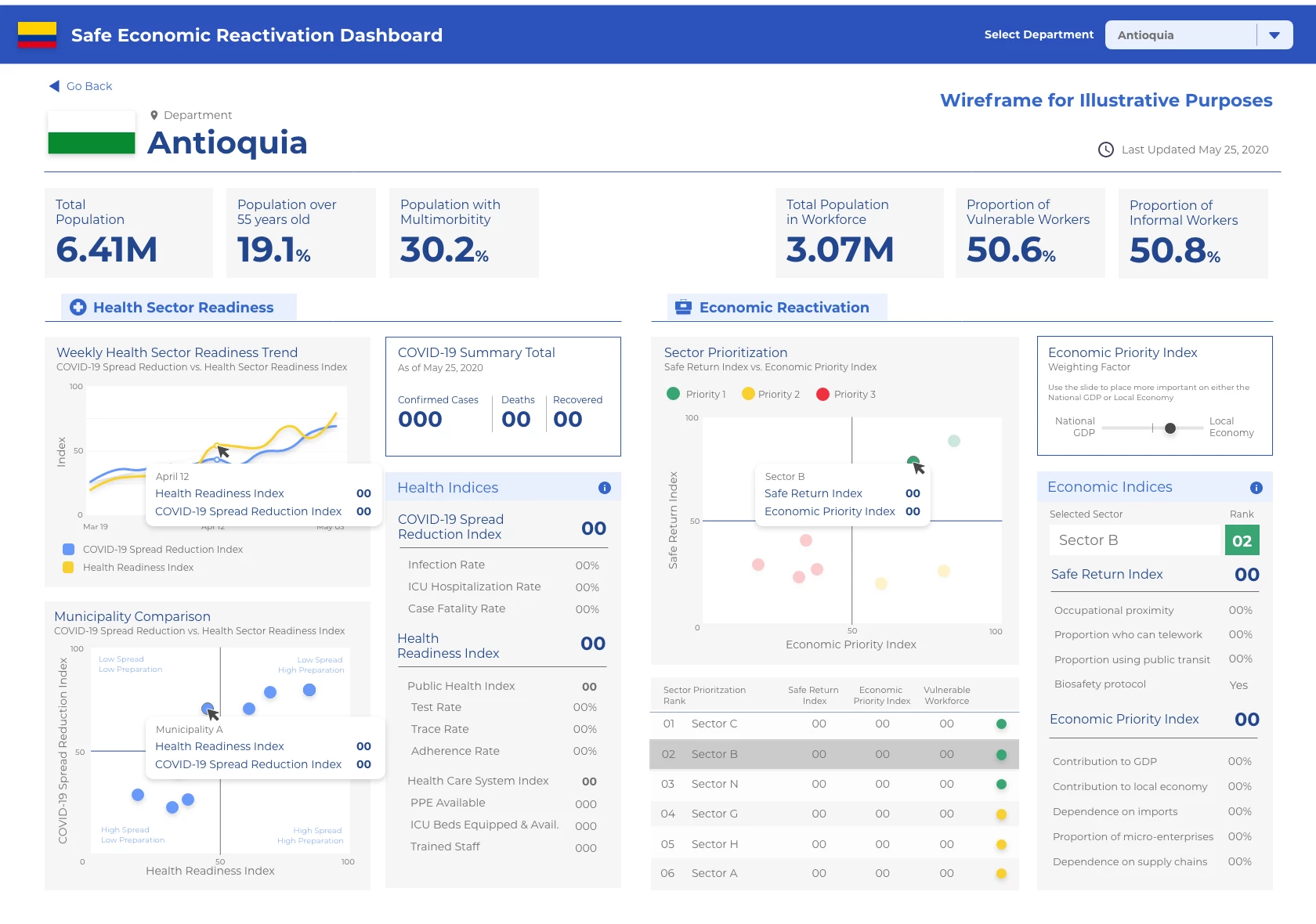
Governments around the world are facing an extraordinary dilemma: after weeks of shelter-in-place orders that have contained the spread of the virus but also created deep negative effects on peoples’ lives and livelihoods, when and how can they reopen their economies safely?
The uncomfortable truth is that there is no easy answer, and governments are having to weigh trade-offs between the negative impacts imposed by hard restrictions to economic activities, and exposing their people to a virus for which there is no vaccine, no clear treatment and limited capacity to test, trace and provide care.
With such huge challenges, how can we help countries make the best possible decisions? We can find some of the answers in Latin America.
The World Bank, in collaboration with the government of Colombia, is developing a prototype dashboard that helps policy makers on a near real-time basis monitor the interplay of virus spread , health sector readiness to address new clusters of infections, and the readiness of economic sectors to operate safely.
How does this dashboard work?
First, we need to evaluate the conditions to begin reopening an economy.
From a health sector perspective:
- Infections should no longer be spreading widely, and there should be a solid understanding of the prevalence of infections.
- Local public health units should have enough capacity to test patients at scale, trace contacts within hours for those infected, isolate infected people, and quarantine contacts.
- And the health care system should be able to withstand a surge of sick patients while keeping its frontline health care workers safe from infection.
From an economic reactivation perspective, governments should consider the ability of different sectors to maintain physical distancing and operate safely, while maximizing the impact of their reactivation on economic output and employment . Understanding local variations in health sector readiness relative to the spread of the virus, on the one hand, and economic specialization and local labor markets dynamics, on the other hand, is key to adopting plans that maximize the impact of reactivation on people’s livelihoods and the economy while minimizing further spread of the virus.
Better data can help
Readiness means that local public health units can detect and follow up on new cases, hospitals are ready to manage spikes of sick patients, governments have established clear guidance for businesses on how to operate safely, and businesses are ready to implement this guidance.
Despite large gaps in knowledge about preventing and treating COVID-19, reliable data can help decision makers understand the conditions necessary to safely reopen economies and keep the spread of the virus at bay while a vaccine remains unavailable. Jurisdictions that are able to monitor the gap between readiness and current reality will be in a better position to act when necessary.
The conditions described above can be measured and monitored on a near real-time basis through a combination of routine data collection and relatively simple modelling.
|
Conditions to be met
|
Key Performance Indicators |
| Spread of infection sustainably reduced |
|
| Public health and health care systems ready to contain new outbreaks and care for patients |
|
| Economic reactivation balancing safe return to work and maximum impact on output and employment |
|
It is possible to summarize this information through a readiness dashboard informing policy makers at the national and subnational levels about their jurisdiction’s level of readiness to safely reopen economic sectors and define which of them should go first, depending on local or national priorities. This dashboard includes indices of health sector readiness and safe economic reactivation for priority sectors, as presented in Figure 1 below.
Figure 1: Prototype for an economic reactivation readiness index dashboard

Based on lessons learned through its work in Colombia, the World Bank is actively engaging with several other countries in the region to adapt this approach, so that their need to restart the economy safely while preserving the health of their people can be met during the duration of the pandemic.
Maintaining economic activity and employment – to secure livelihoods – while safeguarding public health will remain a policy dilemma as long as a treatment and vaccine for the virus are not available at scale. A readiness dashboard for economic reactivation offers a powerful instrument for governments and societies to understand the policy challenges they face. It can help them weigh what’s possible so that lives, livelihoods, and economies at large can resume while managing risks and avoiding another economic shutdown.




Join the Conversation